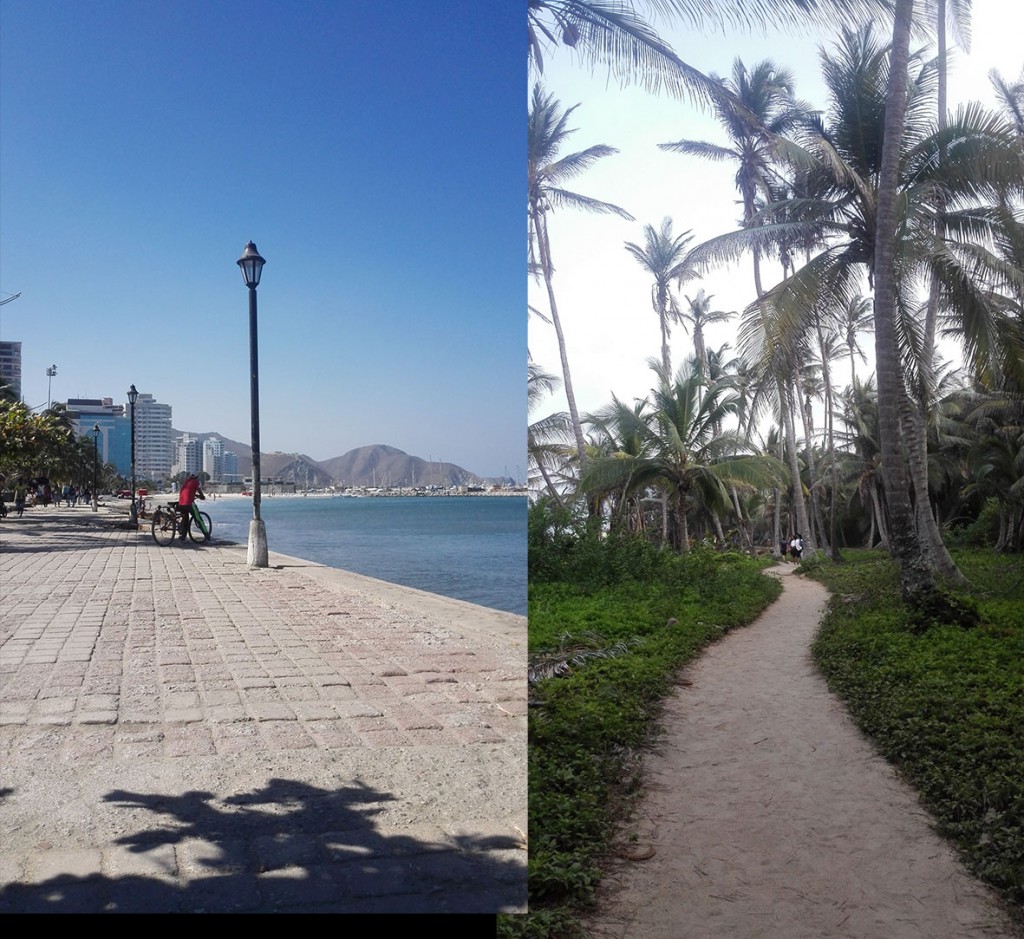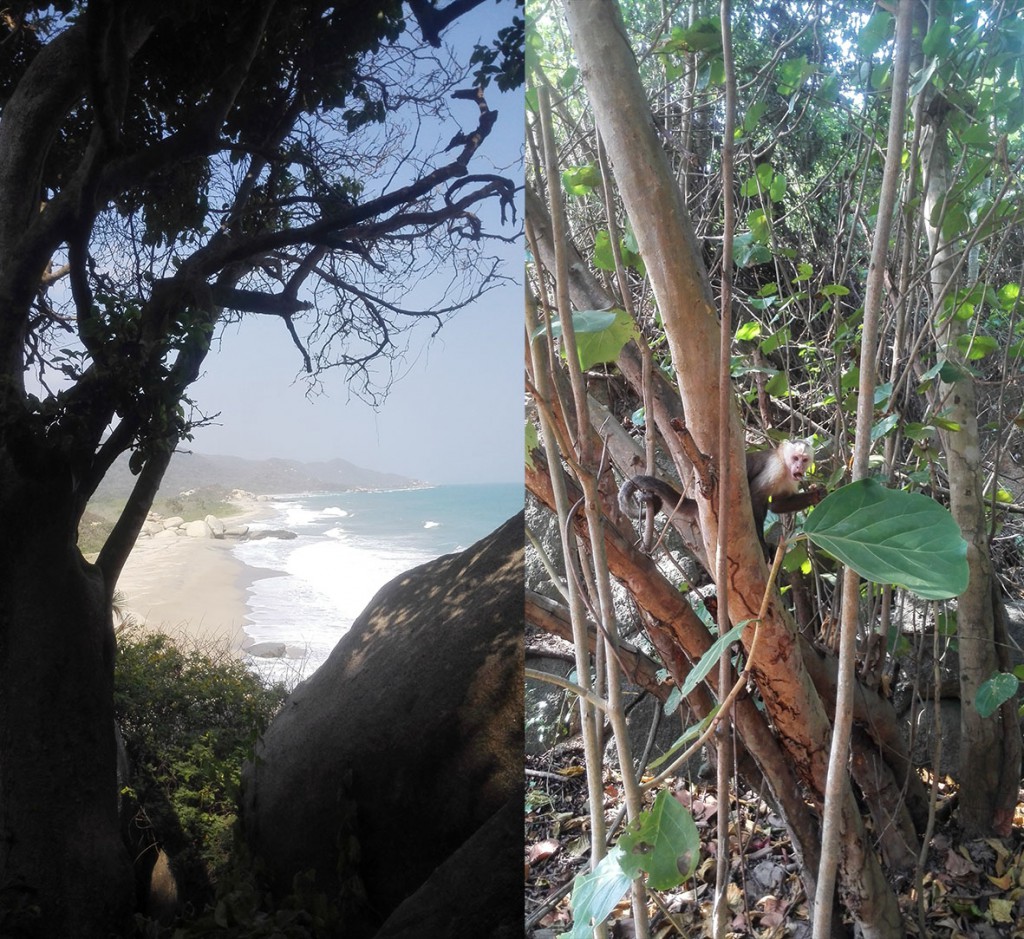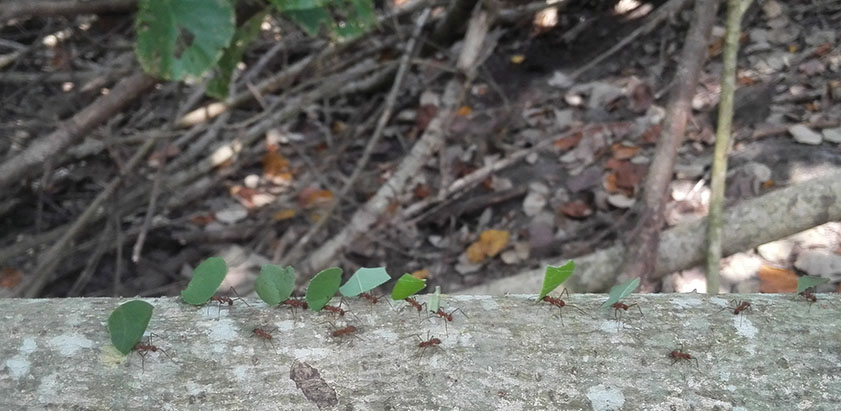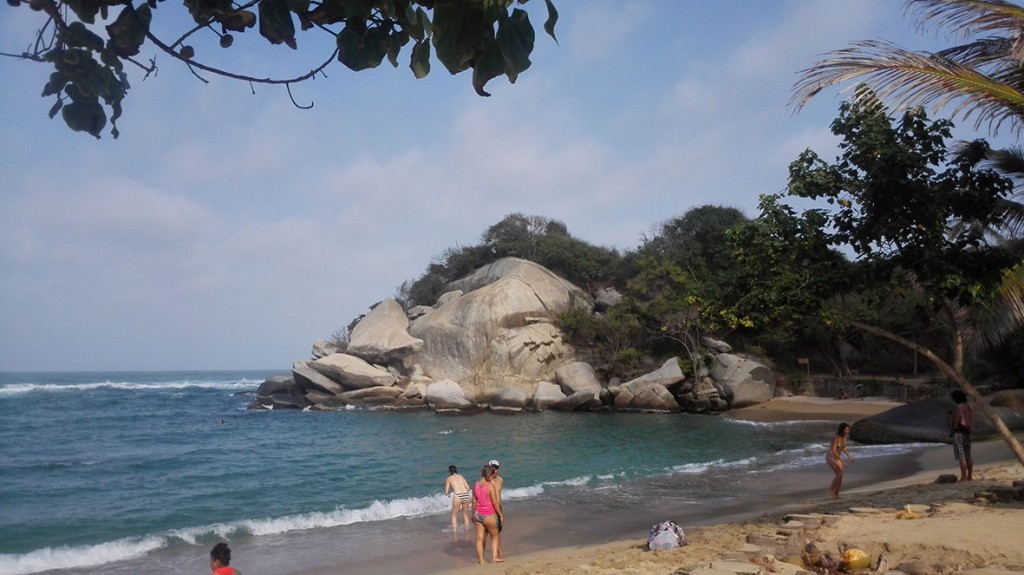Tayrona National Park promised a lovely hike and no wifi. It was said to be an adventure in the Colombian nature that I’d never forget. When I heard that I would have the option to stay the night and fall asleep to the sound of the ocean, I knew there was no way I could say no to that. Despite the fact that I’d never really hiked before, I set of on what would become one of the most memorable parts of my trip this far.
About a month ago I was desperately looking for a book at San José airport. The most interesting one was Wild by Cheryl Strayed, a book about how she hiked alone on the west coast in USA for a hundred days. It read it slowly at first, not too interested, but then I got hooked and finished it with an urgent need to go hiking.
A couple weeks later I arrived on the northern Colombian coast and heard about a national park called Tayrona. Online, I read about how you could hike for an hour or two, look at monkeys and sleep in hammocks by the beach. The people I met who had been there told me about how they’d seen no monkeys and gotten a great amount of mosquito bites.
”Perfect”, I thought. Then I probably gave my parents a mild heart attack as I told them that they wouldn’t hear from me for a few days, because I was going solo hiking in the Colombian forest.
Follow this page on Facebook to get more travel stories and inspiring articles like this in your feed: www.facebook.com/ettannatliv

To the left: The beach in Santa Marta. To the right you see one of the treks. During the walk, you will see many sides of the Colombian forests, as the scenery is constantly changing. Photo: Pernilla Rundquist
Before I left I spent a few days in the closest town to the national park, Santa Marta, and got myself a flashlight, lots of water, food and toilet paper. I was planning on staying in Tayrona for one or two nights, and enjoy being disconnected from the rest of the world.
Then the day of the hike came and I was out the door before seven in the morning. At this point I’d been traveling for over six months, but never had I gone on a hike, and even though I’d left most of my stuff at the hostel, my backpack was heavier than ever due to all the water and food. I was sweating heavily in the already hot morning sun as I tried to find the bus. After having asked four locals and slowly gotten closer to the bus station, a lady told me to follow her and walked with me the rest of the way.
One hour later I was at the park entrance, and the staff had all the tourists watch a movie about the park before they let me buy a ticket for roughly 10€. Then, right beyond the entrance, I took a shuttle bus for 1€ to the end of the road, where the trail began. I made sure my way to heavy backpack sat alright on my back, gulped some water, and set of.

During the hike through Tayrona, you will first hear the waves from afar, but this is how it will look when you first see the ocean. To the right: one of the monkeys who played in the trees during the walk to Bukaru Camp.
This is where I really started regretting my decision to go. Not only was it hot and my bag was heavy, but there was people everywhere. This wasn’t the peaceful solo hike I’d imagined. But I walked onwards, over rocks and fallen trees, under great bushes and through humid air. I cursed. A lot. There was a loud ”Fucking hell” for every walk uphill.
Then my shoulders grew numb from the weight of the backpack and I started lifting my gaze of the trail. I was in the forest, and the beauty of it was breath taking. Everywhere were lianas and lizards. The trees were wide and tall. The smell of the forest, and the sea hiding somewhere further ahead, was calling me to keep moving. Soon, the only cursing was when I reached the top of the small hills and saw the views, going ”holy shit”, and couldn’t quite believe my eyes. Especially not when I suddenly heard the sound of the crashing waves against the shore, when the trail turned and then, there it was. My beloved ocean.
I kept walking filled with wonder. People seemed to disappear further behind or ahead of me, and I was mostly alone. Suddenly there was a mini pig-like creature running through the bushes. Then there was a monkey relaxing in a tree right by the trail. Then three smaller ones were playing tag on the branches above me. Further ahead, I stopped to stare at the large ants carrying leaves on their jungle highway. Another tourist stopped beside me.
”So cool”, we both said, and then standing in silence, watching the ants work.

The hard working ants are a common sight during the walk, often crossing the trail on the ground or on the branches above. Photo: Pernilla Rundquist
It took me a little more than an hour to walk to Bukaru, the campsite I’d chosen to stay at because it was said to be smaller and less touristy then El Cabo further down the trail. I rented one of the forty hammocks they’d hung under a simple roof, dropped off my bag in the luggage room, and walked to the beach right by the camp. People were not allowed to swim there because of the strong currents, so I just rested, watching the waves hit the shore, before I continued to a nearby beach, La Piscina. There I took a swim in the heavenly blue water.
After having dried in the sun and gotten a freshly pressed orange juice from one of the small stalls with food, I continued to El Cabo. There I almost regretted my choice of campsite when I saw the hut they’d built for hammocks on the rocks by the ocean. At the same time, this was a much more crowded beach, and I was there to just relax, so Bukaru suited my needs much better.
The hours passed very quickly and slowly all at once. Without neither internet nor a good book there wasn’t much to do but to watch the people and the nature. When it started to get dark, I headed back to Bukaru, accompanied by the sound of the birds, and watched the sun set behind the clouds.

The lights in the camp went out at eleven, and everything got pitch black. Still, not a single mosquito had bothered me, and I lay in my hammock for hours, listening to people talk and dozing off from time to time. It was warm the entire night, with only an occasional wind blowing through the camp. Every now and then a coconut would fall heavily to the ground between the tents, and when morning came I would cautiously watch the palm trees before I passed in a wide circle around them.
As the sun rose, I once again headed to the beach and sat down. All around me were beach crabs that ran in and out of their holes in the ground, playing peak-a-boo, as I unsuccessfully tried to take photos of them.
I had thought of staying more than one night, maybe visit the small ancient city up in the mountains, but other travelers’ opinions of how it wasn’t too impressive combined with the lack of sleep, made me decide to let this amazing visit be a twenty-four hour adventure. So before the park had become filled with people, I set off though the forest, less bothered by my backpack, and walked along on the trail. Everywhere around me were the sounds of the many, many animals lived in the park.
I walked alone with a smile on my face, peacefulness in my mind, and I enjoyed every step of my mini hike through this Colombian paradise.
Info box about Tayrona National Park
- The park is reached by a one hour bus from the market in Santa Marta, or by a one hour – often very bumpy – boat ride from the nearby village of Taganga to the El Cabo beach.
- The park contains of 150 square kilometers of rain forest and beaches, and was established in the 1960s. The park has plenty of wildlife, such as monkeys, birds, iguanas and jaguars.
- There are food and drinks to buy at the campsites in the park, but the prices are twice or triple what you’d pay in the rest of Colombia.
- There are several options when it comes to accommodation. In Arrecifes, El Cabo and Cañaveral you can rent a tent or hammock, or set up your own tent. On these sites there are also Ecocabanas and rooms to rent.
- Park Tayrona is a good place to go snorkling, you can also hike further up the trail to ancient Indian ruins.
- Definitely bring: a flashlight, lots of water, toilet paper and swimwear.

